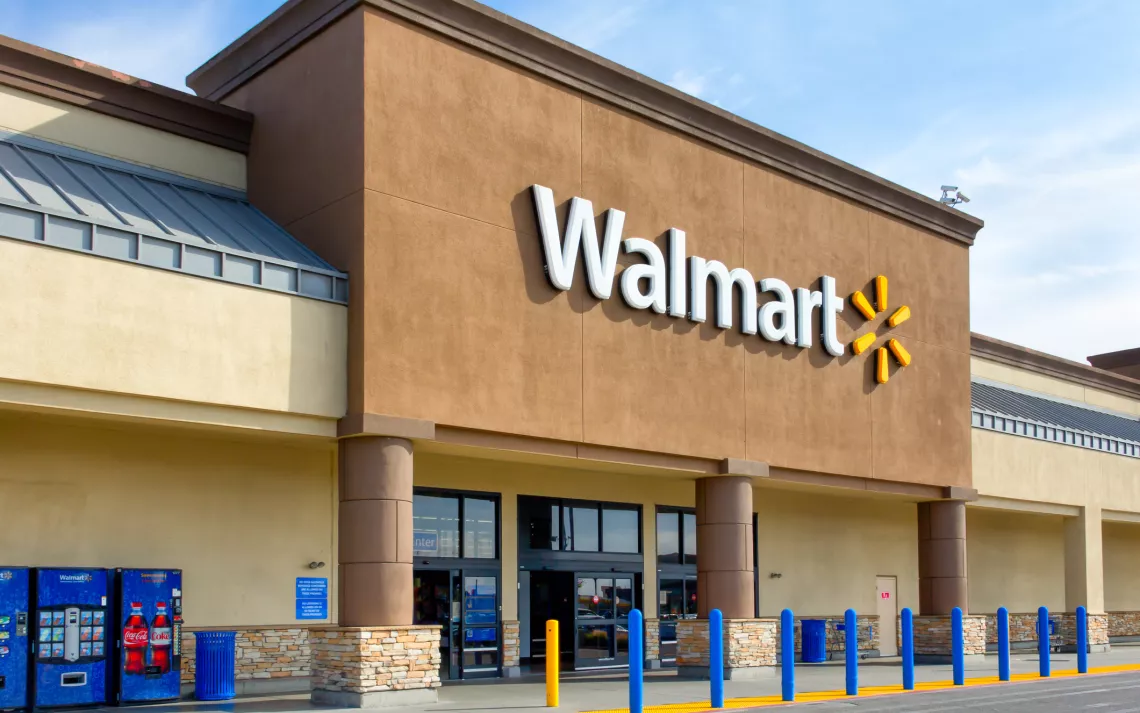Big Debate Over the Big Box
Has Wal-Mart warmed to eco-responsibility?

FORMER SIERRA CLUB PRESIDENT ADAM WERBACH once referred to Wal-Mart as "a virus, infecting and destroying American culture." Now he's an environmental consultant to billionaire Sam Walton's steamroller of sprawl, and you're more likely to hear him spouting the motto "Take sustainability to scale."
So why did the guy who created the Club's nationwide Sierra Student Coalition go to work for a company whose annual revenues of more than $351 billion and some 3,500 U.S. stores make it the world's largest retailer? Werbach says that by going big he can "focus on helping the companies that have the largest consumer impact."
The environmental community's challenge, he says, is to make the realities of global warming "intensely personal and important to the millions of people who don't live in coastal cities and towns." For Werbach, ground zero in that effort is Wal-Mart.
But Wal-Mart was sprouting signs of green even before it hired the iconic tree hugger.
In late 2005, CEO Lee Scott announced the corporation's goal "to be supplied 100 percent by renewable energy, to create zero waste, and to sell products that sustain our resources and the environment." Since then, the company has made strides even a wary environmentalist would find encouraging, among them:
- Thanks to research by energy guru Amory Lovins of the Rocky Mountain Institute, Wal-Mart improved its fuel efficiency by 25 percent (eliminating 400,000 tons of CO2 pollution in one year), partly by installing generators in its fleet of trucks so that parked drivers don't need to run their engines just to get air-conditioning.
- To advance its goal of reducing packaging by 5 percent by 2013, Wal-Mart announced in September 2007 that it would sell liquid laundry detergent only in concentrated form, a move that saves plastic, transportation costs, and shelf space.
- Last October, the retail giant met its goal of selling 100 million energy-efficient compact fluorescent lightbulbs within a year. The company used a tried-and-true strategy: Educate customers with a marketing blitz and large in-store displays--and slash retail prices.
- With the power of a good-size country, Wal-Mart has put the squeeze on its 60,000 suppliers to reduce their carbon footprint. Starting in 2008, the retailer will use data from suppliers to measure the impact of its entire supply chain. The incentive: Wal-Mart promises better placement in stores for products that have addressed sustainability issues.
- Wal-Mart has pledged to sell only shrimp that comes from farms certified by a third party as nonpolluting. So far, its processing facilities have met the goal. Wal-Mart says all its shrimp farms will be certified within 18 months.
The company, which recently changed its slogan from "Always low prices" to "Save money. Live better," doesn't intend to lose any potential sales as it goes green. One electronics company, for example, was willing to package even its high-end accessories in inexpensive, highly recyclable cardboard instead of plastic "blister packs." Fearing a loss of sales if shoppers couldn't immediately see a difference between basic and premium products, Wal-Mart hammered out a compromise in which plastic packaging was reduced by two-thirds--but not totally eliminated.
Such big-business compromises may keep some green customers from racing to the nearest exurban mall. For its part, the Sierra Club sponsors Wal-Mart Watch, whose goal is "to challenge the world's largest retailer, Wal-Mart, to become a better employer, neighbor, and corporate citizen."
Werbach doesn't want the Club to compromise on its key concerns--among them Wal-Mart's contribution to sprawl and the effects its "supercenters" have on local communities. But he does hope enviros won't tune out the efforts of a company that operates in 13 countries and sees 127 million customers each week. "This is a huge opportunity to get something done for the planet," he says.
 The Magazine of The Sierra Club
The Magazine of The Sierra Club



